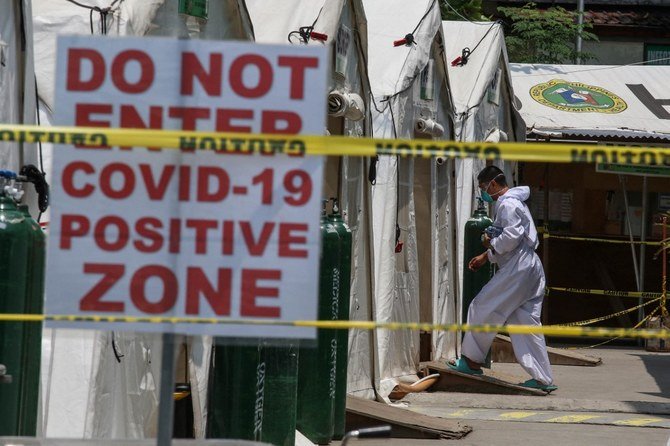The Delta variant is now the dominant strain of daily COVID-19 cases in the Philippines, exacerbated by community transmission of the coronavirus type, a World Health Organization (WHO) official said.
“This situation is not anymore surprising. We know the Delta variant, due to the high transmissibility, will replace the wild type of the virus, and what we are seeing here in the Philippines is not unique,” WHO country representative Rabindra Abeyasinghe told local media.
A community transmission happens when sources of the infection can no longer be traced. Philippine health officials earlier confirmed community transmission of the Delta variant in the country’s capital region and nearby southern provinces.
But Abeyasinghe said the Philippines managed the surge of cases with the impositions of lockdowns in early August, increased vaccination efforts and the expansion of health care capacity.
“We have learned our lessons early, we saw what happened [in India and Indonesia], and we were looking at the potential scenario in the Philippines, and we have a two-pronged strategy, one is tightening border controls and the measures the government implemented. The second strategy is the rapid increase of vaccination between the elderly and those with comorbidity,” Abeyasinghe said.
But Philippine health undersecretary Maria Rosario Vergeire said the Delta variant could drive COVID-19 cases to peak in the middle of this month, based on the daily infection patterns.
“Steep increase in new cases is seen in the recent week. New peak continues to increase,” Vergeire said, as she noted that the Delta variant had been detected in all cases reported by regions of the country, except for one.
Health officials on Wednesday confirmed 14,216 additional COVID-19 infections, bringing active cases to 140,909. The Philippines’ caseload also breached the two-milion mark at 2,003,955, with 33,533 fatalities related to the highly infectious disease.
Initial cases of the Delta variant were detected in returning overseas Filipinos from countries – including India, the UAE, Bangladesh, Pakistan and Indonesia – with a high incidence of the strain, prompting the Philippine government to impose a travel ban on travelers from there.

